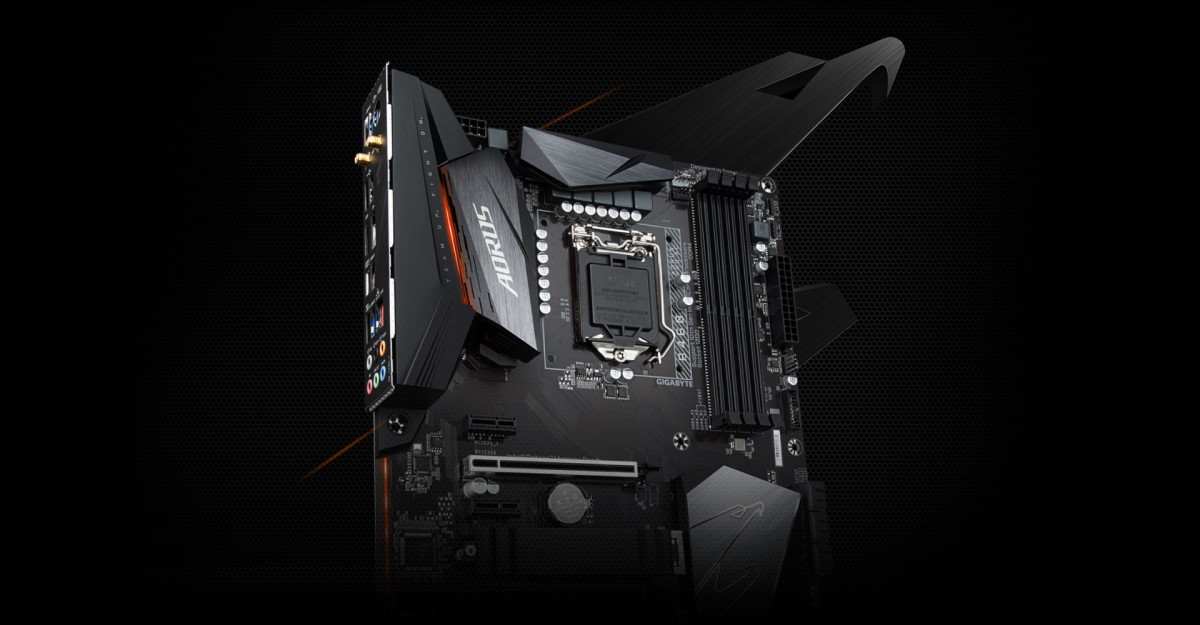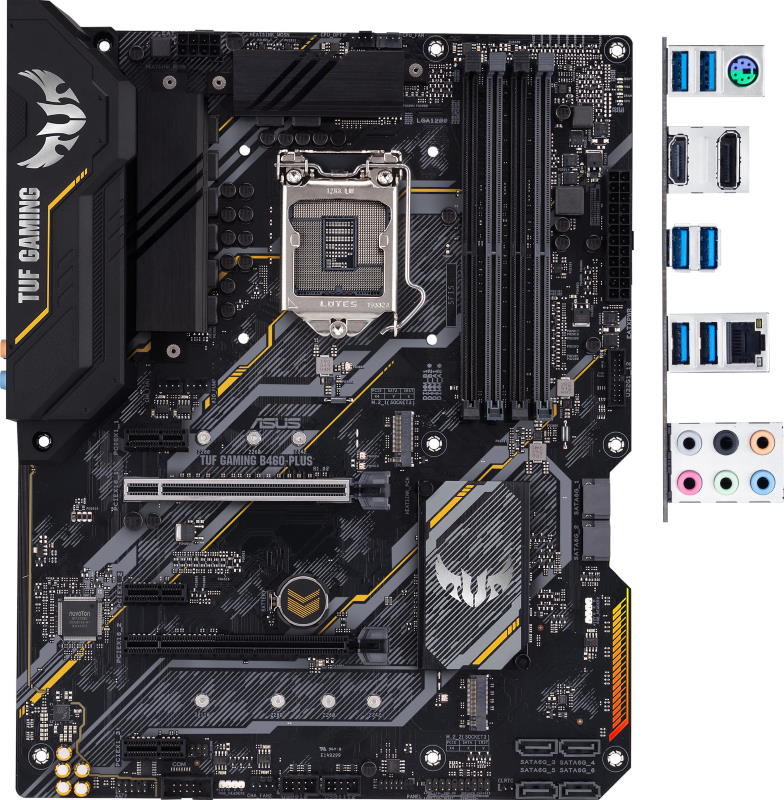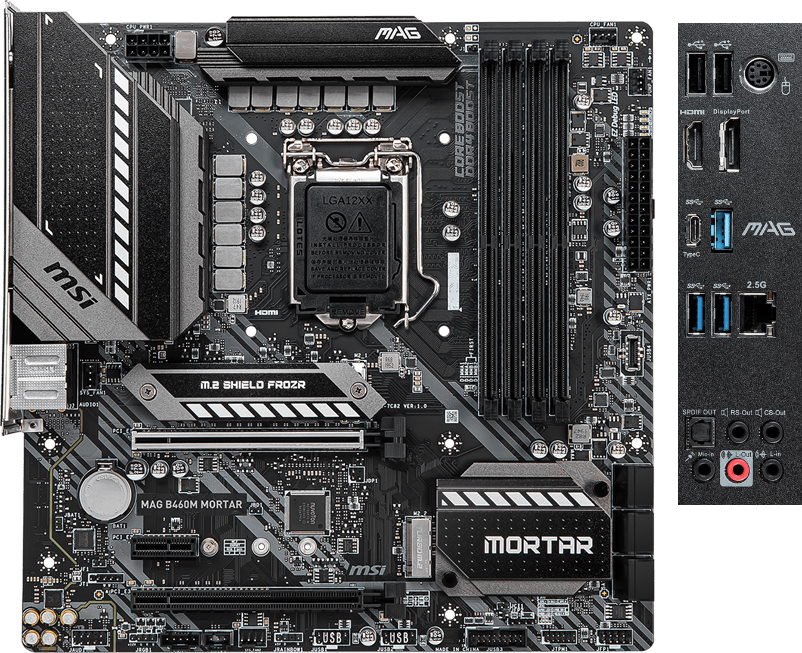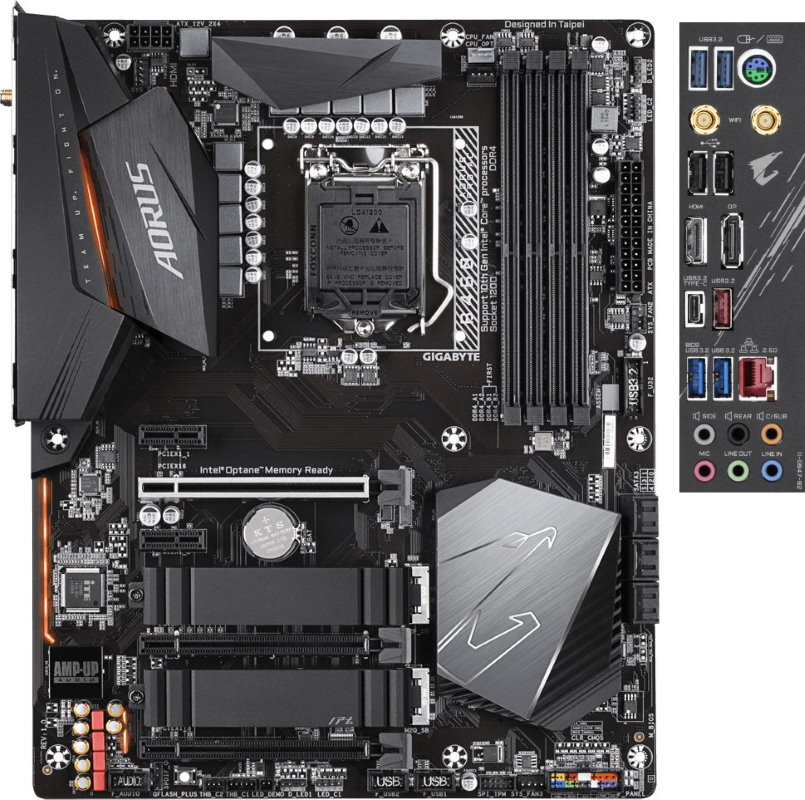Strong middle class: TOP 5 motherboards based on the Intel B460 chipset

In a special table, you can compare the characteristics of all five boards on the B460 chipset. And follow the link to find the entire catalog of motherboards.

If we draw parallels between manufacturers of motherboards and smartphones, then ASRock will be a sister company of Xiaomi. They have a similar approach ― we pack the maximum amount of coolness in one product, set the price lower than the competitors, and then think about what not to save noticeably. Frankly speaking, the approach is ambiguous, someone bought a motherboard from ASRock a long time ago and is still happy, someone on the contrary believes that saving on the foundation of a computer is stupid, sooner or later you will have to pay.
The new ASRock B460 Pro4 board perfectly illustrates this thesis: it is a fairly pumped motherboard that will cost 10-15% cheaper than its B460 chipset counterparts. It boasts a good element base (9 power phases, a VRM radiator, high-quality chokes, a sound path with a Realtek ALC1200 codec and ELNA capacitors), a decent set of connectors (a pair of reinforced slots for video cards, M.2 with steel radiators, 6 SATA, etc.) and a couple of additional baits for buyers. The first bait is the RGB backlight synchronization system, the second is the Base Frequency Boost feature. Its essence is to increase the limit on the power supply of the processor, which theoretically allows you to raise the frequency of the non-overclocked processor. Recall that Intel programmatically clipped this feature in B460 chips.
During testing, we did not find any obvious shortcomings. We were ready for the fact that RAM is accelerated only by voltage and timings. Intel has its own opinion on this, if you want to overclock components to the limit, be kind enough to fork out for a motherboard on the Z490. Also, the network periodically complains that UEFI does not see some SSD models in the boot menu. We rechecked and the drive from the test stand started up without any problems. Apparently, this is one of the annoying problems with the firmware that periodically occur at the start of sales.

Motherboards on the B460 chipset have strange positioning: this is the middle class, who likes to walk in the territory for the elite. Because of this, in retail there are quite expensive options for the B460 with a bunch of modern connectors, a pair of sockets in the RJ-45 and even an external Wi-Fi 6 antenna. In the case of the Asus TUF GAMING B460-PLUS, none of this is there. There are also no traditional gift packages for buyers of TUF boards. No plugs, no spare coolers, as it was before. Because of this, the halo of selectivity inherent in the first-born TUF has faded. Previously, these boards were perceived as "almost premium at a delicious price", now the impression has changed to "a strong middle class, nothing superfluous". This does not mean that the fee is bad, the problem is purely in the spirit of "it used to be better".
This also applies to the branded "increased reliability". Apparently, Asus decided that the Intel B460 chipset was not designed for overclocking and bold experiments with components, so they did not bother much with the element base and power subsystem. Yes, branded throttles that have passed military certification and branded capacitors with an extended lifetime are claimed, but all this is relevant for any board of this family. As a result, we received a high-quality, but modest by modern standards, board with an 8-phase power subsystem with a pair of cooling radiators and reduced overclocking capabilities. As tests have shown, this good is optimally suited for working with not too voracious Core i5 processors. Processors of an older class with a TDP above 65 W can work unstable, dropping frequencies during automatic overclocking.
In terms of equipment, the TUF GAMING B460-PLUS looks like a standard motherboard on the B460: four RAM slots, a pair of M connectors are at your service.2 with cooling, a pack of conveniently located PCI-E 1x and PCI-E 16x ports, straight and angular SATA3 sockets, a useful set of LEDs in everyday life and a good Intel I219-v LAN controller. The number of additional features of the board is minimized, its main task is to drive reliably. You can only mention an improved version of the ALC S1200A codec, a modern DisplayPort video output for displaying images from an integrated processor graphics card, a reinforced PCI-E slot and connectors for synchronizing the backlight with the Asus Aura Sync utility.

Within the PRIME line Asus produces moderately high-quality and inexpensive motherboards designed for the mass consumer. And the B460 chipset fits perfectly into this concept, offering the user an optimal set of electronics and ports, but without the horse price tags for motherboards with the Z490.
Like the younger model Asus PRIME B460M-A in the PRIME line, the Asus PRIME B460-PLUS is designed to build a mid-level PC based on Comet Lake processors without overclocking. The B460 is not very good at this. But unlike the simple Asus PRIME in the PLUS version, you do not have to regret the lack of connection options: here you have 4 slots for RAM with a frequency limit of 2933 MHz, a pair of M.2 with NVMe support, traditional 6 pcs of SATA3, two PCI-E 16x slots with the ability to install two video cards in CrossFire mode and a bunch of USB. However, without USB-C, look for it in more expensive boards. From the unusual, old video outputs (analogue VGA and digital DVI-D) and a pair of classic PCI slots that allow you to connect some old peripherals like an internal sound card catch your eye.
Formally, the Asus PRIME B460-PLUS supports all existing Comet Lake processors up to Core i9. But if someone decides to build a powerful supercomputer on its basis, it is better to stop and exhale. There are only 8 power phases, the radiator is small, the thermal pads are simple, and the Digi+ ASP1400CTB digital controller is not designed for exploits. On such a good, it is best to start simple chips with a heat dissipation of 57 – 65 watts. Why not Core i7-10700, which has the same TDP? But because the power subsystem is not enough to maintain stable frequencies in the turbo boost and the radiator will work to wear. With the power limit turned off on the test bench, it managed to heat up to 132 °C. But this is not an electric shashlychnitsa.

The MSI B360M PRO-VDH is an affordable but high—quality mid-range motherboard based on the B460 logic set. Among the features of the board, it is worth highlighting reinforced PCI-E slots to protect the graphics card from electromagnetic interference and physical damage, we will divide M.2 with cooling, pumped Realtek RTL8125B network interface with bandwidth2.5 Gbit/s, the Realtek ALC1200 audio chip and the extremely interesting PL Overclock feature, which removes most of the overclocking restrictions sewn into the B460 chipset. Such is the middle finger towards Intel.
By the way, MSI is not alone in this desire. In late spring, ASRock showed a similar feature, calling it Base Frequency Boost. And a little later, ASUS joined the chat with its version of Asus Performance Enhancement. In all three cases, the idea is the same ― to remove artificial restrictions on overclocking the processor without an unlocked multiplier. In fact, this is not so much overclocking as a flexible increase in the CPU power limit, which allows it to work at maximum speeds across all cores without dropping frequencies in the process. Judging by the first reviews, the thing turned out to be useful, but contradictory, in some tests they promise almost a 30% increase in power, in others they advise not to wait more than 3 – 5%.
With an eye on the $150 price tag, the MSI MAG B460M MORTAR looks like a pretty interesting option for a mid-level build based on the tenth generation of Intel Comet Lake-S processors. Formally, it is friends even with 16-thread Core i9, but for the stable operation of the chip in a turbo boost, we would look at something simpler than the Core i5 or Core i7 caliber. Much more importantly, for the micro-ATX format, it has excellent equipment (4 slots for RAM, 2 for a graphics card, 6 SATA, a pair of M.2, etc.), high build quality and excellent circuitry with an enhanced 14-phase power system. And there are no obvious drawbacks. Except that it would be possible to add more slots for cooling the case, but this is already a quibble. And so, what else do you want from a middle-class motherboard?

Gigabyte B460 AORUS PRO AC is a perfectly balanced model based on a modern Intel B460 chip, which takes its toll due to a pumped functional set, unusual for motherboards of this class.
The Gigabyte B460 AORUS PRO AC has a couple of features in its arsenal that set it apart from other middle-class mothers. Firstly, it is a LAN port with increased bandwidth up to 2.5 Gbit/s. It's unlikely to be useful right now, but it won't be superfluous for the future. Secondly, it is an audio subsystem based on the high-end Realtek ALC1220 codec with an intelligent headphone amplifier that automatically adjusts to their resistance. The third trump card is the high―speed USB 3.2 Gen2 port, which now flashes mainly in overclocker boards. You may notice that for a $200 board and even not on a top-end chipset, this is not enough. And you will be right. In this case, the price tag is justified by the built-in Wi-Fi modules (Intel 9260, which operates in two 2.4 and 5 GHz bands) and Bluetooth 5.
The circuitry corresponds to the high level of Aorus products: a reinforced 10-phase power subsystem, a two-section VRM radiator with large heat-conducting plates and high-quality thermal pads with mosfets. The connectors are also in full order: 4 DDR4 slots, a pair of M slots.2 with cooling radiators, a reinforced PCI-E 16x slot, a modern set of video outputs including HDMI for using processors with integrated graphics. Numerous USB ports, including USB-C, are provided for connecting peripheral devices.
Whichever way you look at it, Gigabyte has turned out to be an excellent board for assemblies above the average level. The only problem with the price tag, asking for $200 for a formally average fee is a dubious idea. For the same money, you can look after something based on the Z490, which will have no restrictions on overclocking the processor.
Articles, reviews, useful tips
All materials
















